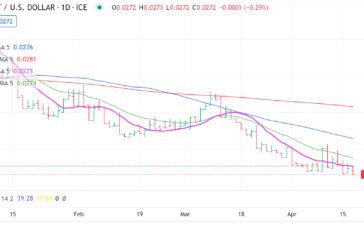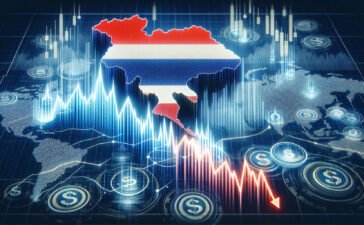Despite disrupted supply of components and parts from Japan, Thai manufacturers in the automotive and electronics sectors see only a slim chance of massive layoffs. Expecting the disruption to end soon, they realise that layoffs could create a long-term problem amid the tight labour market.
Earthquakes and a tsunami in Japan have damaged many automotive and electronics plants. As they need time to repair their facilities, components exports to overseas manufacturers have been disrupted. In Thailand, manufacturers in the automotive and electronics and |electrical-appliance sectors are affected the most.
Some industrialists earlier expected layoffs as a consequence.
But with nearly 2 million workers, these two sectors remember the difficulties they faced filling vacant positions after the layoffs in the aftermath of the 2008 global financial crisis, because of high demand for skilled labour and the low un-employment rate of less than 2 per cent.
“Electronics and computer |manufacturing plants in Thailand learned from the crisis that it’s |difficult to hire back skilled labour |once the situation returns to normal,” said Sampan Silapanad, |president of the Electronics and Computer Employers Associa-|tion.
Suparat Sirisuwanangkura, head of the Automotive Industry Club under the Federation of Thai Industries (FTI), does not expect layoffs either.
“I don’t think we will see lay-|offs in this round. Thai manufac-turers have learned to have flexi-|bility after we experienced two financial crises. Workers through the supply chain should not be affected by the impact of the tsunami,” he said.
The Automotive Industry Club maintains its auto-production target of 1.8 million units this year, thanks to robust demand locally and overseas.
The automotive industry, from assembly plants and suppliers through service-related business, now employs nearly 1 million.
According to the National Statistical Office, of the total labour force of 53.72 million, or those |aged 15 and above, only 270,000 |or less than 2 per cent were un-employed as of December. Among the 39.19 million employed, the entire manufacturing sector accounted for 5.10 million, down from 5.23 million in 2009.
After the most recent layoff spree, many of those who lost their industry positions permanently settled in agricultural jobs in their home towns, pushing employment in the agricultural sector up from 15.99 million to 16.95 million.
Labour shortages aside, Thai industries are now having to find component supplies outside |Japan.
Suparat said some manufacturing plants in the automotive industry might face supply shortages for the short term but they are shifting to other sources such as North America and Europe.
This cannot solve all problems, but it helps ease the situation, he said.
New suppliers may not be able to serve all automotive companies, as some of them cannot build up the capacity immediately to serve the increased demands to replace supplies from Japan. So automotive companies such as those based in the United States have to share limited parts from suppliers outside Japan. Supply shortages should then continue for some time, but to a lower extent.
“We [carmakers in Thailand] have been kept informed conti-nuously by auto-parts manufac-|turers in Japan but it is not yet |confirmed whether they can export parts to Thailand after the Songkran festival. So it is quite difficult to evaluate whether the serious shortage of parts from Japan will bring a hard time for Thai manufacturers,” he said.
Honda Motor Japan and Nissan Motor have announced they would resume operations of their Japanese assembly plants today, while Toyota Motor Corp would reopen domestic auto plants on April 18. However, they acknowledged that full capacity would not be resumed on those dates, as many suppliers are still struggling from the earthquake and tsunami damage. Toyota will restart production at about 50-per-cent capacity and continue at this level through April 27.
Because of the suspended production, Toyota saw a shortfall of 260,000 units from March 14 to April 8 after closing 18 factories, citing a shortage of electronic parts, rubber and plastics. Moody’s Investors Service estimated that the disaster disrupted Toyota’s shipping of about 500 types of automotive components.
Honda, Japan’s third-largest auto-maker after Toyota and Nissan, has lost 58,000 units of production after closing plants. Nissan aims to begin 50-per-cent operation at its parts and auto assembly plants today. Its damaged engine plant in Iwaki, Fukushima prefecture, will resume production next Monday, as will its car-assembly plant in Tochigi. Other car-assembly plants would reopen between today and Wednesday, it said.
Suparat, who is also senior vice president of Toyota Motor Asia-Pacific Engineering and Manu-|facturing, said that although the |situation was not yet clear, he was confident that the problem would not worsen and lead to a suspension of operations or layoffs. Carmakers in Thailand have dealt with the situation through a cut in overtime and working hours, as they did during the financial crisis.
Supachai Suthipongschai, chairman of the Electrical, Electronics and Allied Industries Club (EEAIC) under the FTI, said it was possible companies would suspend their operations if parts from Japan cannot be exported within the next |two months. However, he expected this to be the case only for the short term.
“The electronics industry in Thailand has faced a labour shortage for years. The current problem may balance labour supply and demand in the industry. For now, we are not worrying about problems with production.”
Sampan added that electronics and computer plants in Thailand normally imported less than 5 per cent of their parts.
Those relying on parts from Japan have inventories that should last two or three months. During this time, they can look for other suppliers to replace parts from Japan. As a result, they will not face a supply shortage.
Supachai said that rather than layoffs, the industry’s major concern is the difficulty of selling electrical appliances because of natural disasters and extreme weather such as the recent heavy rains and flooding in the South.
Supachai, who is also manag-|ing director of Thai City Electric, |the local distributor of Sharp, said companies that produce consumer appliances had not been affected |by the crisis in Japan as about 90 |per cent of parts used for the in-|dustries are locally produced. For Sharp, only LCD (liquid crystal display) televisions, which are in oversupply in the world market, are imported.
Flooding in the South has also affected consumers’ spending. Hence electrical appliances now are in oversupply.
Source: The Nation





